Welcome to Natural Wonders, where I hope to pique your interest each week by sharing some fascinating questions and answers about natural phenomena. If you’re new here or if someone forwarded you this email, you can subscribe below.
Check out past posts by going here and see who I am and what Natural Wonders is about here.
Last week, while I was mountain biking on the trails at our house, I came across what you see in the picture above. It looked like some sort of animal scat.
So, being the weirdo that I am, I got a couple sticks and pulled it apart:
It was almost entirely fur, with a little bit of leaf matter mixed in. What animal could this have come from? It’s possible it’s from a predator that ate something with black fur. However, there were no bones or gristle mixed in (I’ve pulled apart plenty of scat that had bones and even teeth in it). Another possibility is that this animal groomed itself and then pooped out its own fur, sort of like a hairball from a cat.
What has black fur that lives in this area? I could only think of a few animals: skunk, black coyote, or a bear.
I needed to do some research to figure out…
Whose pooh are you?
This was not my first encounter with random animal feces.
Quite a few years ago, Andrew and I were mountain biking near the Cranberry Bogs of West Virginia. We were towards the end of a 12-mile route when we came across what looked like a pile of horse manure:
“I didn’t think horses were allowed on this trail,” I said to Andrew as we continued on. We rounded the curve and saw, not a horse, but this:
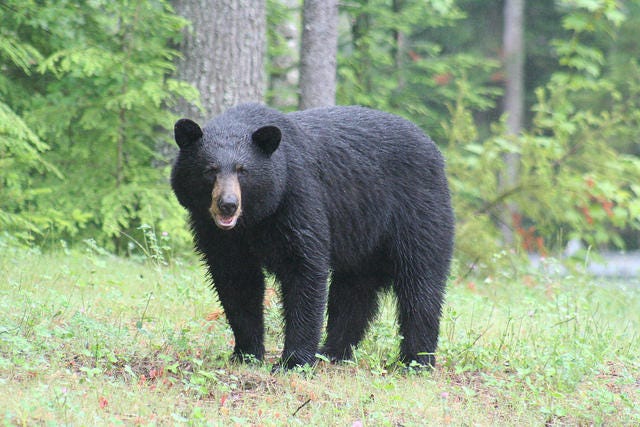
That’s not the actual bear we saw because I did not have the presence of mind to pull out my camera to take a picture. Instead, I felt the immediate need to join this bear in his bathroom duties.
We thought the bear would take off running as soon as he saw us but curiously, he did not. He swung his head around and looked at us, then lumbered off towards the bogs, which were just 100 feet away through the woods. He got behind a nearby tree, sat back on his haunches, and grabbed the tree, peering around the trunk at us. We kept staring at him (from a safe distance), so he moved on to a different tree and repeated the tree-peeking motion. It was like an elaborate game of hide-and-seek, but with a possibly deadly outcome.
This went on long enough that Andrew and I had to consider what to do. We couldn’t detour around this spot because there was a steep bank to the left that we couldn’t lug the bikes up. To the right were the bogs and the bear. If we retraced our steps backwards, we’d be doubling our ride, and it hadn’t been an easy one because of scrambling over downed trees and such.
After waiting what seemed like forever, but was probably between 5-10 minutes, Mr. Bear was playing hide-and-seek far enough through the woods (about 50 feet) that we decided to walk our bikes past him. We would straddle our bikes as we walked in order to be ready to take off if needed.
What happened next is burned into my memory. Although we thought the distance between us was decent, Mr. Bear apparently disagreed and as we waddled our bikes parallel to him, he uttered a hair-raising guttural growl and leapt up the tree he’d been hiding behind. Chunks of bark flew through the air as he bounded up the tree, continuing to growl.
Andrew and I screamed a few choice words and took off, pedaling like mad down the trail. Or at least, I did – Andrew had the misfortune to be sitting in a mud puddle at that exact moment, and yabba dabba do’d until he finally got traction and caught up with me.
We got far enough down the trail to feel safe and laughed uncontrollably from the relief of not having been mauled to death. Then we went back to get a picture of the bear in the tree, because stupidity:
Turns out, the bear was not playing hide-and-seek, but was testing the trees to find one large enough to use as an escape hatch.
All this to say, I am familiar with bear scat. And what I found at the top of this newsletter did not look like that.
It turns out that bear scat differs based on its diet. It tends to be globular, like a big pile of horse manure, when the bear has been eating berries and other vegetation. That’s what we saw in West Virginia. When a bear has been eating meat, the scat is more tubular and contains hair and bones.
However, what I found on our trails looked like neither of those and might be what’s called a black bear fecal plug. When bears hibernate, poop builds up in their lower intestine. Because they’re not eating during this time, the poop is made up of hair and leaves from when they wake up and groom themselves and isn’t actually that smelly. When they emerge from their dens in April or May, they emit the fecal plug before heading off to find food.
Needless to say, none of us anticipated that “fecal plug” was a term that would ever enter our vocabulary, and yet here we are. You’re welcome. See if you can work it into a conversation this week.
Here in North Georgia, bears don’t hibernate like they do in the northern states. Instead, bears enter a state of torpor (similar to what hummingbirds do overnight) where their essential functions shut down. They don’t eat or drink or use the bathroom during this time and are actually able to recycle their pee into protein. They survive on body fat they built up beforehand from eating acorns – they usually try to eat around 20,000 calories a day in the fall fattening period. Because of this huge fat store, they typically don’t lose muscle mass during their hibernation period and just survive on their fat.
The main difference between true hibernation and torpor is that torpor allows animals to wake up periodically to groom themselves or to protect themselves against predators if need be. Scientists have filmed bears in dens with hidden cameras and found that they groom themselves more often than originally thought.
All of this lends credence to the possibility that what I found is a fecal plug made up of hair the bear ingested as it groomed itself over the winter.
It also means we may have a hungry bear who’s been “hibernating” somewhere on our property. Which is really cool, but also means we might need to be a bit more careful walking Oscar at night…
Have you ever seen a bear in the wild? Or maybe you’ve seen sign of one without actually spotting it? The photo below is from a possible bear den we found on a hike about 3 weeks ago - note the sliding paw print in the mud bank below the den. Share your story below - I’d love to hear what you’ve seen!
Weird Nature of the Week:

Detritus:
Family finds FIVE bears hibernating under their home
A deluge of dog feces is causing problems out in the wild
In the only NON-feces related story in today’s newsletter, a neat video of polar bears in Russia:
If you enjoyed this issue, please click the “like” button below - it helps raise the profile of the newsletter and makes it easier for others to find it. And please share it with your friends!

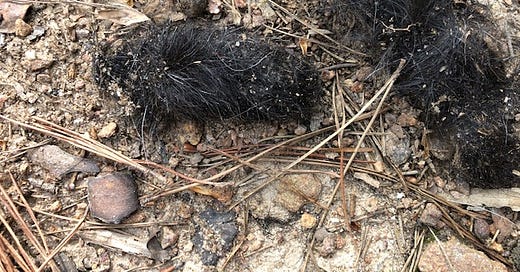



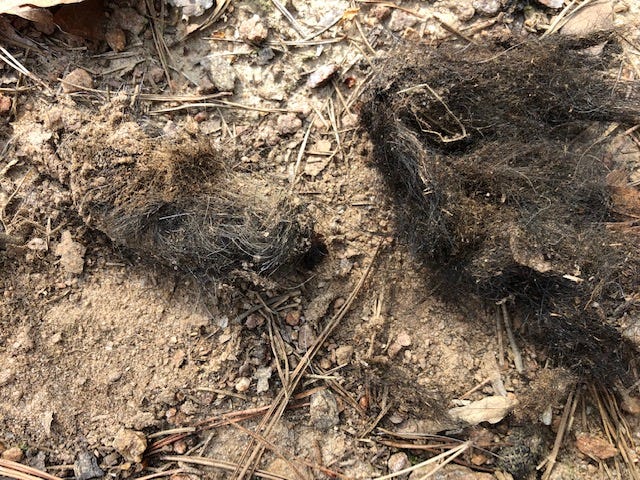
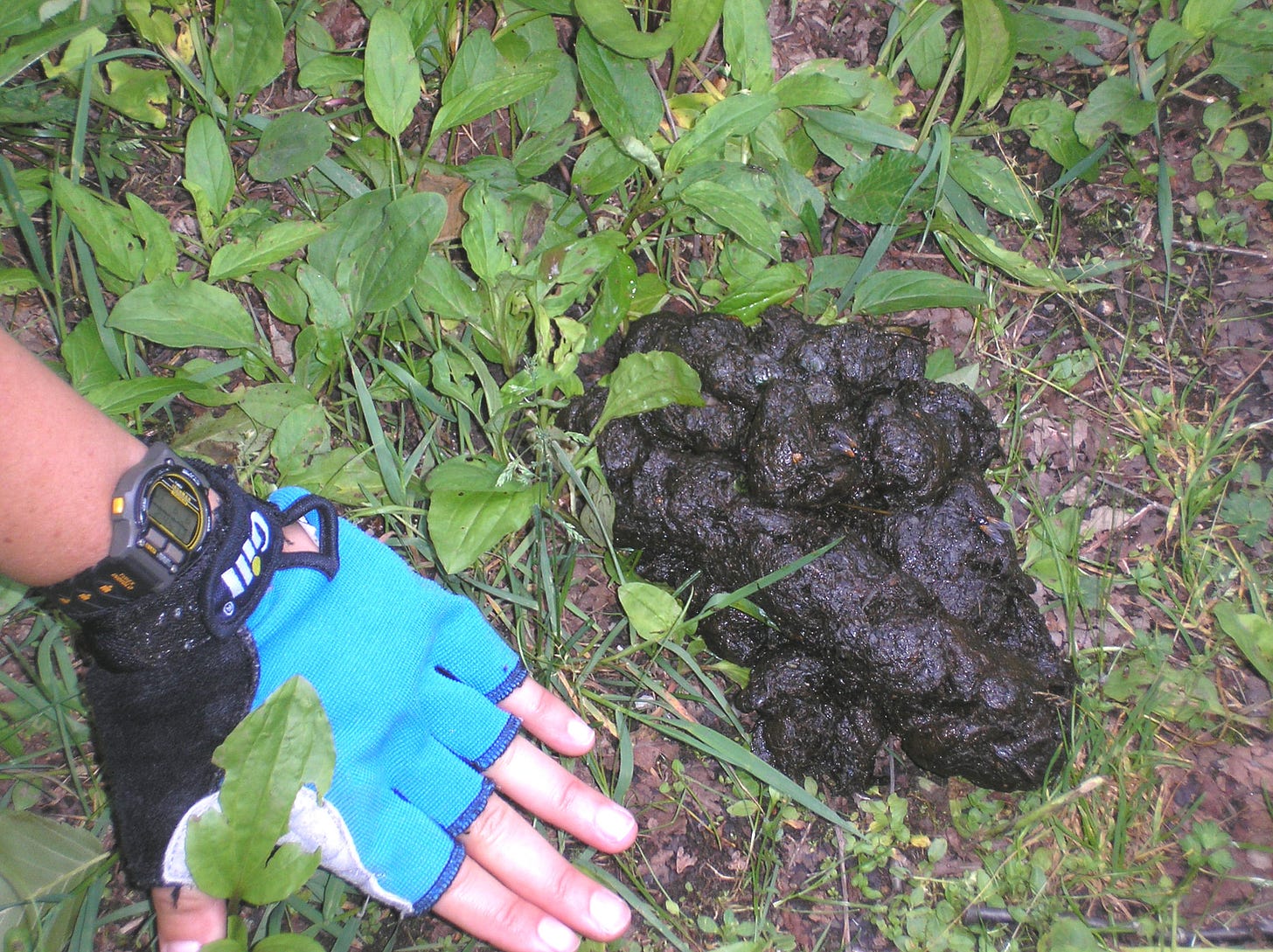

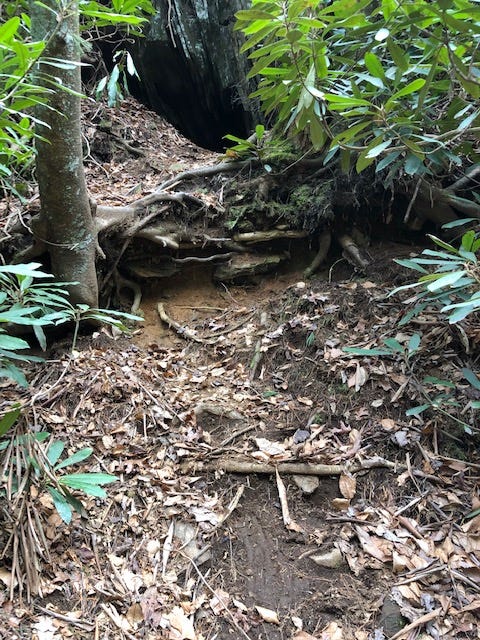
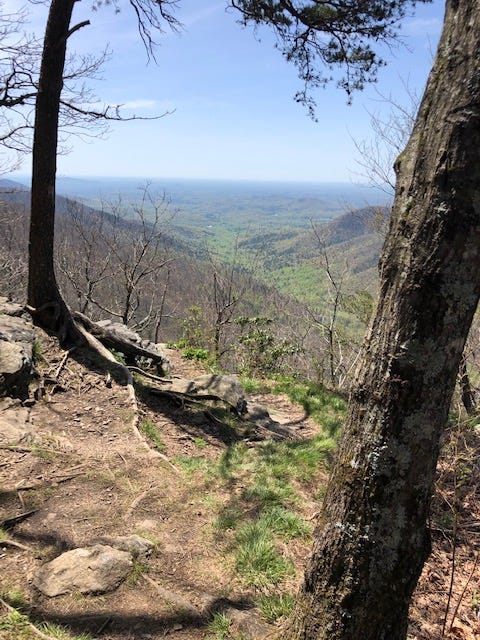
It would be nice if you did a thing for kids (an app? Shorted stories, wit pictures etc??)too my 7 year old grandson would be absolutely fascinated in all these add facts.
Thanks for another fascinating article. I never thought about what hibernating meant for a bear's toilet habits. Fortunately, I don't have to worry about stumbling across a bear, or bear poo, in the wilds of New Zealand.